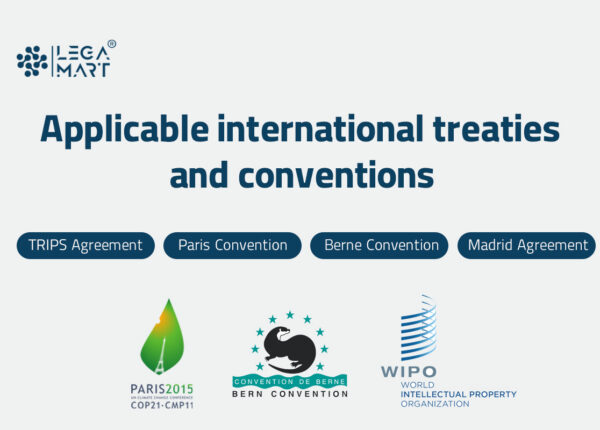Introduction
A royalty agreement can be defined as a legal contract between the licensor and the licensee of an intellectual property. Through this agreement, the licensor grants the licensee the right to use the licensor’s intellectual property in exchange for some royalty payment. The royalty agreement describes how the royalty payments shall be made, the royalty rate, the terms of payment, etc. This can be a separate agreement from the licensing agreement or a separate clause within the leading intellectual property licensing agreement.
Ideally, having a separate royalty agreement ensures that the licensor and the licensee benefit from the agreement. For the licensor, the royalty agreement can allow another company to use its product, gaining access to an entirely new market. For the licensee, on the other hand, the agreement is capable of providing them access to products that would otherwise not be accessible to them.
Importance of royalty agreements in intellectual property licensing
Becoming familiar with royalty agreements becomes especially important when considering licensing your intellectual property or becoming a licensee. The royalty agreement acts as the central part of the licensing deal. It ensures that both sides of the agreement are compensated fairly, in accordance with their distributions to the arrangement entered into.
Key Parties in a Royalty Agreement
Licensor
Definition and role
The licensor is the person giving away their intellectual property for use to the licensee. Therefore, the licensor is the owner of the intellectual property, who agrees to license their intellectual property in exchange for some royalty payment. Through the royalty agreement and the intellectual property licensing arrangement, the licensor can access a new market without setting up their business in a new jurisdiction. Rather, the licensor grants the right to set up the business for the intellectual property to the licensee, who then provides the licensor with a portion of the profits or sales made in that jurisdiction per the terms mentioned in the royalty agreement. In this process, however, the licensor continues to be the owner of the intellectual property, who then enjoys the royalties paid by the licensee.
Licensee
Definition and role
The licensee is the person getting the intellectual property for use from the licensor. Therefore, while the licensor remains the owner of the intellectual property, the licensee has entered into an arrangement with the licensor for using and selling the intellectual property in exchange for some royalty payment. Through this arrangement, the licensor manages to gain direct access to the licensor’s products. If the parties manage to negotiate for an exclusive licensing agreement, it also ensures that the licensee is the only person selling the intellectual property within the specified jurisdiction. Therefore, the negotiation of the applicability of the agreement acts as another vital component of the arrangement, considering that royalties are further increased or decreased depending on the exclusivity and jurisdiction of the agreement.
Types of intellectual property covered by royalty agreements
Patents
Patents are exclusive rights granted over an invention. In general, receiving a patent means the holder gains the right to decide how or whether others can use the invention. In exchange for gaining this right, the patent holder makes technical information related to the invention available to the public through the patent document. When the patent-holder decides to license the patent and allow another company or person to make use of the patent and make it available to the general public, they can enter into a royalty agreement to negotiate how the patent shall be used and what the returns gained by the patent-holder during the term of the agreement.
Trademarks
A trademark is a symbol that can distinguish the goods or services of one enterprise from the goods and services of the other enterprise. Therefore, a trademark is a unique mark a brand uses to make the consumer know about them. Licensing of a trademark is generally included in franchising agreements, where the franchisee can use the trademark to open another branch of the enterprise in another jurisdiction. The process also involves licensing the trademark (intellectual property), along with the payment of royalty for using the trademark, from the franchisee to the franchisor. Therefore, the royalty agreement is entered between them to decide on the terms.
Copyrights
Copyright describes the rights of creators over their literary and artistic works. Generally, works covered within the ambit of copyright are books, music, paintings, sculpture and films, computer programs, databases, advertisements, technical drawings, maps, and anything which involves creativity. Licencing the copyrighted material in exchange for some royalties through a royalty agreement is possible. For instance, a book writer may allow their book to be licensed to the publishing house for publication in exchange for gaining some royalties through the sale of the book.
Trade secrets
Trade Secrets are IP rights over confidential information capable of being sold or licensed. Through the royalty agreement, the parties might enter into a mutual understanding of licensing the confidential information for the purpose mentioned within the agreement for a specific term. Any unauthorized use of confidential information would lead to unfair practice and violation of the trade secret protection, ultimately terminating the agreement altogether.
Components of a royalty agreement
A royalty agreement is a legal contract that supervises the use of intellectual property or other assets in exchange for a certain amount of royalty payments between two parties, often called a licensor and a licensee. Particular components of a royalty agreement differ on the nature of the royalty agreement and the parties involved in it. However, below mentioned are some standard components of a royalty agreement:
Intellectual property identification and description
It is critical in a royalty agreement to explicitly identify and characterize the intellectual property (IP) that is subject to the agreement. This helps the licensor and licensee agree on the exact assets to be licensed. You must specify the licensed IP type, such as patents, trademarks, copyrights, trade secrets, or any other relevant IP. This ensures that both parties are aware of the special legal rights of the IP. You must thoroughly and clearly describe the intellectual property, including its features, functions, and other identifying characteristics. This description must be clear and short for the licensee to comprehend the extent of the intellectual property being licensed.
Grant of rights
Outline the rights provided to the licensee in detail. This includes using, reproducing, distributing, displaying, performing, or changing intellectual property. Make the extent and limitations of these rights clear.
Purpose of the license
Indicate the reason for the license being given. This may involve the specific activities or uses of the permitted intellectual property that the licensee may engage in. It could include, for example, the production, distribution, or sale of products containing the IP.
Territory
Define the geographical region or areas where the licensee can utilize the granted rights. Depending on the scope of the license, this could be a specific country, region, or the entire world. It aids in defining the parameters under which the licensee can use intellectual property.
Exclusivity
Indicate whether the license will be exclusive or non-exclusive. The licensee has the sole right to exercise the rights within the defined territory, excluding the licensor and other possible licensees. A non-exclusive license sometime permits the licensor to transfer equivalent rights even to third parties.
Duration
Determine the time frame of the license, specifying the start and end dates, as well as any stated events or situations that result in the termination. It might include a one-time license for a certain number of years, a permanent license with the option for either party to revoke it with notice, or a license that expires when a specific event occurs.
Royalty payments
A licensee owes royalties or fees to a licensor in return for the right to use the licensor’s intellectual property (IP) or other assets. These sums of money usually depend on a fixed royalty rate, which is generally proportional to some financial measures, including net sales, gross revenue, or units sold.
Calculation and reporting
This section will explain how to calculate and report royalty payments. This usually considers any metrics or sales numbers used in the calculation, like net sales, gross revenue, or units sold. It should also clearly explain how often royalty payments are paid, such as monthly, quarterly, or annually.
Terms of use
The “Terms of Use” in a royalty agreement usually describe the terms and restrictions controlling the licensee’s utilization of the licensed intellectual property. It clearly outlines the rights and obligations of the licensor and licensee as they will pertain to the use, protection, and better management of intellectual property.
Limitations and restrictions
It is always necessary to specify limitations and controls on the specific use of the licensed intellectual property. Putting limitations on the scope of use, such as limiting it to specific products, services, or industries, may be among one of these restraints. You can also include limitations that will prohibit the licensee from sublicensing or transferring the rights granted to them without the previous agreement of the licensor. Thus it is vital to specify these constraints and restrictions to ensure that the licensee’s use of the intellectual property is consistent with the licensor’s goals and safeguards the integrity of the IP.
Quality control
Quality control measures are essential to maintain the standards and reputation of licensed intellectual property. This could include setting quality standards, manufacturing techniques, or approval procedures that the licensee must follow. It enables the licensor to ensure that the licensed items or services fulfil specific quality, consistency, or brand image standards. The licensor can protect their intellectual property and goodwill by implementing quality control methods.
Confidentiality and non-disclosure provisions
In royalty agreements, confidentiality and non-disclosure are essential for safeguarding the licensor’s confidential information and even fostering confidence among those concerned parties. You must declare unambiguously that the receiving party (the licensee) has no entitlement to reveal confidential data to any third party unless the party who has provided the information (the licensor) has already granted written approval to him. It should also prohibit the receiving party from utilizing confidential information for any other cause than those stated in the agreement.
Indemnification and warranties
Specify each party’s indemnity duties. This means that one party commits to indemnify or defend the other against any claims, damages, or losses resulting from the licensed intellectual property’s use. The scope and restrictions of indemnity must be specified. Outline any warranties or representations made by the licensor concerning the intellectual property under license. This may involve ownership, non-infringement, and suitability for several purposes warranties. The warranties must be accurate, comprehensive, and adhere to all applicable laws.
Termination and breach
A royalty agreement’s termination and breach provisions describe the conditions under which the agreement may be terminated and the penalties of such breaches by either party. These measures are essential for protecting the rights and interests of both the licensors and licensees.
Dispute resolution mechanisms
A royalty agreement’s dispute resolution methods give a framework for resolving any conflicts or disagreements that may emerge between the licensor and licensee. When inserting dispute resolution measures in a royalty agreement, variables such as the complexity of the case, the desired speed of settlement, and the financial implications must all be considered. Ensure appropriate processes are included and customized to the agreement’s needs and circumstances.
Negotiating a royalty agreement
Preparing for negotiations
Preparing for negotiations in the context of negotiating a royalty agreement involves several key steps and considerations, which may include; –
- Both parties should first define the subject matter in question.
- Conducting thorough research and analysis to understand the industry standards, market conditions, and the value of the intellectual property (IP) or product in question can include doing an examination of similar royalty agreements, assessing the performance of comparable products or patents, and gathering relevant data to support your negotiation position.
- Develop a comprehensive negotiation strategy based on your research and understanding of interests. This strategy should outline your approach, potential tactics, and fallback positions.
- Collect and organize any relevant documentation to support your position during the negotiation. This may include market research reports, financial projections, patents, licensing agreements, or any other documents that validate the value or potential of the IP or product under discussion. Having well-prepared documentation enhances your credibility and strengthens your negotiation position.
- Anticipate and Mitigate Risks by identifying potential risks or obstacles during the negotiation process and developing strategies to mitigate them. This may include anticipating objections, identifying areas of potential compromise, or considering alternative approaches to overcome impasses. Being proactive in risk management enhances your ability to navigate challenges and reach a favourable agreement.
Identifying and addressing key issues
Royalty rate and payment terms It is vital that both parties should understand and discuss the royalty rates and payment terms, particularly during their negotiations, before concluding any Royalty Agreement. Parties should first understand the factors that influence the royalty rate, such as the value of the licensed property, its market demand, the duration of the agreement, etc. After each party has understood these factors, they both need to develop negotiation strategies such as analyzing market data, conducting a cost-benefit analysis, and considering long-term business goals.
Each party may make arguments and counteroffers to reach a mutually agreeable royalty rate during the negotiation period. In terms of payment terms, parties should negotiate on how and when the licensee will make royalty payments to the licensor, including factors such as a defined payment frequency such as monthly, quarterly, semi-annually, or annually; how the royalty amount will be calculated and reported such as net revenue or gross revenue as well as any periodic reports detailing the sales or usage of the licensed property; and consequences of late or non-payment of royalties
Scope of the license Negotiating the scope of the license involves careful consideration of the licensor’s objectives and the licensee’s intended use of the IP. Both parties should aim to strike a balance that maximizes the value of the license while protecting their respective rights and interests. It is essential to clearly define and document the scope to avoid any ambiguity or potential disputes in the future. The scope that should be discussed during negotiations should focus majorly on factors such as; authorized activities, i.e. the permitted uses of the licensed property; geographical territory where the licensee has the right to exploit the IP; whether the license is exclusive or non-exclusive; and the duration of the license as well as whether the same is fixed term, renewable up.
Exclusivity and territorial rights Exclusivity and territorial rights can have a significant impact on negotiating a royalty agreement. For example, granting exclusivity to a licensee can give them a competitive advantage by limiting competition which can be reflected in the negotiation process. On the other hand, in exchange for exclusivity, licensors may expect higher royalty rates because the licensee is likely to generate higher profits from the IP, and licensors may seek a larger share of those profits through royalties. Territorial rights determine the specific regions or countries where the licensee has the rights to use or sell the IP, and this can affect royalty agreement negotiations in terms of factors such as; market scope, i.e. if a territory holds significant market value, licensors may seek higher royalty rates due to the licensee’s enhanced earning potential in that region.
Performance milestones and obligations Negotiating performance milestones and obligations in a royalty agreement involves establishing clear targets and responsibilities for the licensor and licensee. It includes identifying key milestones, setting measurable criteria, and defining consequences for not meeting the targets. The parties should also consider incentives for exceeding expectations. Flexibility and periodic review mechanisms should be built into the agreement to accommodate changes in circumstances. Seeking legal and expert advice can help ensure fairness and compliance with relevant laws. Effective communication is crucial to establish a mutually beneficial arrangement that supports the success of the licensed intellectual property.
Intellectual property ownership and infringement Intellectual property ownership and infringement can significantly impact the negotiation of a royalty agreement. A good example is if there are multiple parties claiming ownership or if ownership is disputed, it can complicate the negotiation process and raise concerns about the validity and enforceability of the agreement, particularly if the IP includes patented technology that is licensed from another entity, the terms and conditions of the existing license agreement may impact the royalty agreement negotiation. Additionally, the risk of infringement can impact the bargaining power of the parties involved, particularly if there are concerns about potential infringement of the IP; the party seeking the license may be more cautious and demand stronger protections or lower royalty rates. However, if the IP owner has a history of successfully enforcing their IP rights and pursuing infringers, they may have more leverage in negotiating higher royalty rates.
Seeking legal advice and assistance
The business team is usually skilled in negotiating contract pricing, making it possible to determine the suitable pricing for a software license agreement without requiring legal counsel. Nonetheless, they should consider seeking legal advice in certain situations, particularly where the business necessitates price protection during or after the agreement’s term; consulting with legal experts can be valuable. Additionally, seeking legal counsel would be beneficial if the business team lacks familiarity with the current pricing trends.
International Considerations
Cross-border licensing and jurisdictional issues
There are several ways to safeguard the advantages of selling intellectual property internationally. Among these methods, the most versatile and beneficial approach is through a licensing agreement. An international licensing agreement enables foreign companies to manufacture a product owned by another company, either exclusively or non-exclusively, within a particular jurisdiction for a set time. In this mode of entering a foreign market, a company from the home country (licensor) provides the licensee in the host country with restricted rights or resources.
For example, in international technology license transactions, there are several types, with the most prevalent being; international trademark licenses, which allow licensees to use the licensor’s names, brands, logos, and other trademarks; international software licenses provide users with access to software products and usually include privacy policies and information about data ownership and usage reports; and international patent licenses enable foreign companies to produce and sell products that incorporate the licensor’s patented inventions, methods, and designs.
By leveraging these assets, the licensee can produce and sell a similar product in the host country without the licensor needing to establish a new operation abroad. Licensing opens up possibilities for a more interconnected global market by offering a legal framework to take a product or service developed in one country and replicate it in another. Through a licensing agreement, a multinational company grants rights to its intangible assets to a foreign company for a specific duration. The licensor, in return, receives a royalty payment for each unit produced and sold by the foreign company. While the multinational firm doesn’t usually retain ownership, it often offers continued support and guidance. Many companies view licensing as a low-risk method of entering new markets since it usually doesn’t require an upfront investment.
Applicable international treaties and conventions

TRIPS Agreement The TRIPS Agreement covers three main issues:
- It establishes minimum standards for protecting intellectual property rights (IPRs) in different categories. These standards define the scope of protection, granted rights, exceptions, and the duration of protection.
- The agreement focuses on domestic enforcement measures for IPRs, including civil and administrative procedures, provisional measures, border requirements, and criminal proceedings. It ensures that right holders have effective remedies to enforce their rights.
- The TRIPS Agreement provides a dispute settlement mechanism within the World Trade Organization (WTO) for resolving disputes among member states regarding their obligations under the agreement.
While the TRIPS Agreement does not specifically address royalty agreements, it influences their negotiation by providing a framework for intellectual property rights and licensing. Parties involved in royalty agreements need to consider the TRIPS obligations related to intellectual property protection, fair and equitable terms, technology transfer, and dispute resolution to ensure compliance and promote a balanced and mutually beneficial agreement.
Paris Convention The Paris Convention for the Protection of Industrial Property does not explicitly govern royalty agreements. However, it establishes essential principles such as national treatment and priority rights that indirectly impact these agreements. The convention ensures fair treatment for foreign applicants, allows priority periods for filing applications, and provides patent and trademark protection standards. While it doesn’t directly regulate royalty agreements, it establishes a framework of fairness and consistency that supports the negotiation and enforcement of intellectual property rights.
Berne Convention The Berne Convention for the Protection of Literary and Artistic Works, an international treaty on copyright, sets minimum standards for copyright protection. Although it does not directly address royalty agreements, the Berne Convention impacts negotiations by establishing copyright ownership, emphasizing the rights of authors, promoting fair compensation, and recognizing moral rights. These provisions influence the negotiation of royalty agreements by emphasizing the need for authorization, fair distribution of royalties, and respect for authors’ rights. However, the terms of royalty agreements are determined through commercial considerations and the parties’ requirements.
Madrid Agreement The Madrid agreement, which pertains to the international registration of trademarks, indirectly impacts negotiations of royalty agreements. It simplifies trademark protection across multiple countries, potentially facilitating broader trademark coverage and reducing administrative burdens. The agreement can enhance brand recognition, expand international brand development opportunities, and strengthen the licensor’s position during negotiations. Compliance with the agreement’s rules and standards is also essential for maintaining the validity and enforceability of licensed trademarks.
Furthermore, understanding and adhering to the Madrid Agreement is crucial for those looking to Trademark a Logo in the UK, as it provides a framework for international trademark protection that can significantly influence the success and scope of trademark registration efforts.
Enforcement and protection of rights
To foster investment in innovation and prevent widespread economic damage, establishing a robust and well-implemented intellectual property framework worldwide is crucial. This entails ensuring an efficient and effectively enforced infrastructure that deters commercial-scale infringements of intellectual property rights (IPR). Bodies such as the TRIPS agreement, the US Office of Intellectual Property Enforcement (IPE), and the directive on the enforcement of IPRs by the European Commission are good examples.
TRIPS Agreement The TRIPS Agreement is an international agreement encompassing a comprehensive section dedicated to enforcing intellectual property (IP) rights. Within this agreement, provisions make it obligatory for World Trade Organization (WTO) members to establish regulations pertaining to various aspects of IP rights enforcement. These include the acquisition of evidence, provisional court orders, injunctions, damages, other remedies, measures at the border, and criminal sanctions.
The TRIPS Agreement outlines general obligations that promote fairness, transparency, due process, and balance in civil and administrative enforcement procedures for intellectual property (IP) rights. The objective is to enable right holders to address any infringement of their IP rights effectively. These obligations emphasize the importance of fair and equitable procedures, transparency through sharing case decisions, and the opportunity for review by a judicial authority for final decisions.
Enforcement procedures should be implemented in a manner that does not hinder legitimate trade. Members are also expected to have safeguards in place to prevent the misuse of these procedures. For example, provisions for indemnification or providing security measures may be required when applying provisional or border measures. While members are not obligated to establish specialized IP courts or redistribute resources from general law enforcement, they are encouraged to uphold these obligations to ensure effective IP rights enforcement.
Intellectual Property Enforcement (IPE) The US Office of Intellectual Property Enforcement (IPE) promotes and safeguards intellectual property rights (IPR) globally as it emphasizes the fundamental significance of IPR protection in fostering worldwide innovation and driving economic advancement. It actively advocates for robust intellectual property rights systems with objectives such as:
- Preventing consumer harm by discouraging the availability of counterfeit and pirated goods.
- Safeguarding the interests of American IP rights holders in international settings.
- Promoting the essential role of IP protection and enforcement in driving economic progress and development.
- European Commission
There is also the European Commission, whose objective is to establish an infrastructure that enables creators and inventors within the EU to receive fair and appropriate rewards for their innovation, ultimately benefiting the citizens of the EU by promoting welfare-enhancing advancements. The EU already possesses legal instruments, including the Directive on Enforcement, designed to prevent the violation of intellectual property rights. The directive on enforcement of IPRs mandates that all EU countries implement remedies and penalties that are effective, dissuasive, and proportionate when dealing with individuals involved in counterfeiting and piracy. Its objective is to establish fair competition for right holders within the EU, ensuring they have consistent measures to protect their intellectual property rights. In essence, this creates a level playing field for rights holders across all EU countries.
Importance of legal counsel in drafting and reviewing royalty agreements
Ensuring compliance with intellectual property and contract laws Legal counsel is responsible for ensuring adherence to regulations. Intellectual property is an intangible property governed by distinctive and occasionally unforeseen limitations. Having an understanding of these limitations is indispensable when negotiating contracts related to the exploitation and administration of intellectual property. In addition, a well-written contract should strike a balance between ensuring enforceability and avoiding an imbalance of exposure and liability solely placed on one party. Seeking guidance from experienced intellectual property lawyers during the preparation of such agreements can help prevent confusion and expensive disputes.
Addressing potential legal risks and disputes Engaging the services of a lawyer to review contracts prior to signing them can help mitigate the risk of legal disputes and the associated costs that may arise from non-compliance or contract breaches by either party. With their expertise, lawyers can guide you in taking preventive measures to avoid potential litigations or lawsuits from contractual issues.
Protecting the rights and interests of both parties Before any party to a royalty agreement signs a document, they must ensure that they are not exposed to risks. This applies in all circumstances. Regardless of whether they are modifying a document or experiencing a change in their circumstances, it is important to protect all their interests. Often, parties to an agreement may not fully comprehend the consequences of a legal document or understand their responsibilities if something goes wrong. Therefore, It is possible that certain sections of the document be created by a lawyer who prioritized their client’s interests rather than theirs. Signing a document that only serves one party’s interests can have severe long-term consequences for the business. Therefore, it is advisable to have a legal professional review the documents and alert parties if further attention is needed. This practice is also recommended to ensure that the agreement adequately protects the interests of both parties involved.
Conclusion
A royalty agreement serves as a vital tool in negotiating IP licensing. It provides a framework for the parties to negotiate the terms of using and monetizing intellectual property. By defining the rights, obligations, and compensation involved, a royalty agreement ensures a fair and mutually beneficial arrangement for both parties. Furthermore, It allows licensors to expand their market reach and gain financial benefits from their intellectual property while licensees gain access to valuable products or technologies.
Before and during the negotiation process, both parties are advised to carefully consider critical factors such as royalty rates, payment terms, and intellectual property ownership. International transactions should consider various international considerations, such as cross-border licensing and adherence to relevant international treaties and conventions.
Since this agreement can be complicated due to its legal nature, parties are strongly advised to seek professional advice from qualified individuals to help them conduct thorough research and understand the enforcement and protection mechanisms available. With sufficient assistance, parties can navigate the negotiation process effectively and establish a robust royalty agreement that safeguards their interests and promotes innovation and economic growth.




